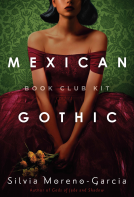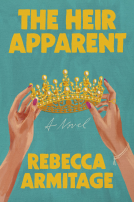
How to Feel
The Science and Meaning of Touch
by Sushma Subramanian
This title was previously available on NetGalley and is now archived.
Send NetGalley books directly to your Kindle or Kindle app
1
To read on a Kindle or Kindle app, please add kindle@netgalley.com as an approved email address to receive files in your Amazon account. Click here for step-by-step instructions.
2
Also find your Kindle email address within your Amazon account, and enter it here.
Pub Date Feb 02 2021 | Archive Date May 12 2021
Talking about this book? Use #HowtoFeel #NetGalley. More hashtag tips!
Description
How to Feel explores the scientific, physical, emotional, and cultural aspects of touch, reconnecting us to what is arguably our most important sense. Sushma Subramanian introduces readers to the scientists whose groundbreaking research is underscoring the role of touch in our lives. Through vivid individual stories—a man who lost his sense of touch in his late teens, a woman who experiences touch-emotion synesthesia, her own efforts to become less touch averse—Subramanian explains the science of the somatosensory system and our philosophical beliefs about it. She visits labs that are shaping the textures of objects we use every day, from cereal to synthetic fabrics. The book highlights the growing field of haptics, which is trying to incorporate tactile interactions into devices such as phones that touch us back and prosthetic limbs that can feel. How to Feel offers a new appreciation for a vital but misunderstood sense and how we can use it to live more fully.
Advance Praise
"Subramanian brings an intensely personal narrative to the study of touch, with a breadth of coverage and a great balance for scientists and nonscientists alike. "
--Robert DeSalle, author of Our Senses: An Immersive Experience
Available Editions
| EDITION | Other Format |
| ISBN | 9780231199322 |
| PRICE | $30.00 (USD) |
Average rating from 4 members
Featured Reviews
 Reviewer 330715
Reviewer 330715
I heard science journalist Sushma Subramanian speak on Story Collider. It was about her experiments with haptic technology while writing a book in the topic. Funnily, her nickname when she was little was "touch-me-not," for the mimosa plant which curls at the feel of a fingertip. She talks about the science behind proprioception and the latest in haptic technology. There is no way she would have realized that the book will be released at a time when we practice social distancing and even a casual handshake between strangers will be a strict no-no. Which makes this book on haptics a very timely read.
 Bill C, Reviewer
Bill C, Reviewer
How to Feel: The Science and Meaning of Touch, by Sushma Subramanian was, I have to confess, somewhat disappointing in its depth and breadth, but is overall a solid work of non-fiction, mixing hard and soft sciences with a healthy dose of more personal/memoiristic writing.
The author’s context for the exploration into touch is the idea that we have, at first gradually and recently much more quickly, lost, well, “touch” with touch. Instead, we since the Industrial Revolution and particularly since the digital revolution, prioritized vision to the near-exclusion of our other senses, removing ourselves from the tactile world we move through, with the most extreme example of this being virtual reality.
The journey through the world of touch incorporates several side-trips. One is the actual physiological science behind how we touch—the various elements and mechanisms of the process, such as mechanoreceptors (“sensors that detect different kinds of deformation by the body”), nociceptors (pain), and thermoreceptors (heat and cold); fast and slow (relatively) nerve fibers that carry the messages from the receptors to the brain; and the parts of the brain, such as the somatosensory cortex, that are heavily involved in processing those messages.
Another trip is through softer sciences such as sociology and psychology, where Subramanian delves into touch-averse people, or why we now need “professional cuddlers” (yes, a real paying job), or how different cultures have different ways of dealing with touching (while carefully noting how cultural or regional generalizations are just that—generalizations only).
She also interviews not just scientists but also artists and people whose lives have somehow been greatly affected by touch, often via the loss of it. These interview subjects include a man who feels nearly no sensations at all (one of fewer than a dozen such people), an engineer/inventor who runs Volkswagen’s haptics group, an artist using virtual reality to treat chronic pain, a woman who has a type of synesthesia where “certain surfaces could make her feel highly specific reactions, from blissful to troubled . . . corduroy made her confused . . . leather made her displeased.”
Finally, as noted, she also brings herself into the story beyond as an interviewer. She describes her experiences in a sensory deprivation tank or taking a massage certification course, as well as casting a close eye on her family’s attitudes toward touching and how it may have affected her own touch aversion, something she further explores with her fiancée through the long-distance magic of haptics.
As stated in the intro, this was a solid non-fiction book, covering the basics of touch scientifically while bringing in engaging personal stories via the interviews. Several aspects though prevented this from being more than solid for me. One is that the prose, while certainly fluid and lucid, was more workmanlike than anything else, lacking the lyricism or sparkling enthusiasm or humor of my favorite non-fiction authors, such as Mary Roach, Dava Sobel, Bill Bryson, or others. Another is that I would have preferred more hard science generally, as well as a better balance between the hard and soft sciences. The book felt it relied a little too much on psychology or sociology studies, the sort of thing I always am hesitant to ascribe too much weight to without a plethora of supporting, multiple studies (to be fair, Subramanian very early on specifically calls out the problem with a lack of replication in these areas as fair warning to the reader). And lastly, the personal areas fell flat for me, partly I think due to style and partly due to not feeling like the author was opening up enough, digging deep enough. Though again to be fair, part of my response could also be because I do read a lot of personal lyric essay (as well as try to write it myself), so this could be an expectations issue more than a writing issue.
So in the end, How to Feel fell short of what I’d hoped for, though I never felt like stopping my read, nor did I begrudge finishing the book. A solid three kind of work that somewhat informs but not quite to the degree I prefer and without the brio of my favorite non-fiction works.
 Anne J, Reviewer
Anne J, Reviewer
We live in a world oriented increasingly toward the visual senses, and that denigrates the other ones—especially touch. Yet touch is a critical part of who we are and how we connect. This book offers new perspectives on this neglected sense, from a biological, cultural, and even technological standpoint.
Reading this book during a pandemic, when we’re all keeping physically distant from each other, will make you long for that pat on the back or hug from a friend—things I will never again take for granted.
 Alexa K, Librarian
Alexa K, Librarian
I requested this because over the past year I've been looking for books that are able to offer insight into what the pandemic has done to us--both individually and socially--as people are going to need to read things which can help them with understanding that. I would recommend this book to those interested in the science and the psychology of touch, and think it offers a good explanation for how touch works, what it means to us, and why it's so important for us as human beings.
Readers who liked this book also liked:
Silvia Moreno-Garcia
Historical Fiction, Literary Fiction, Sci Fi & Fantasy
Dean R. Lomax; Robert Nicholls
Nonfiction (Adult), Outdoors & Nature, Science












